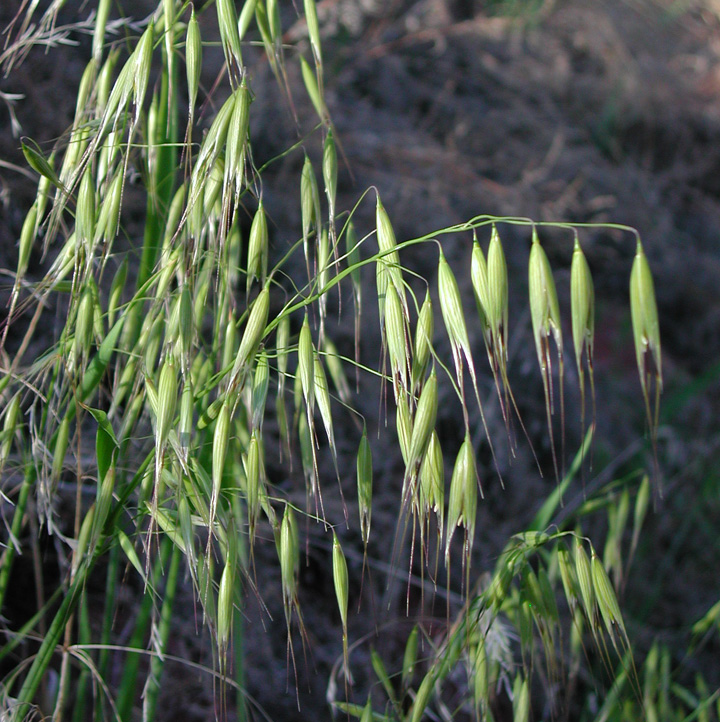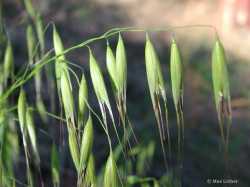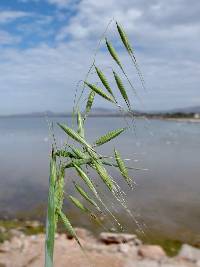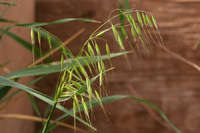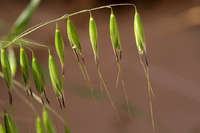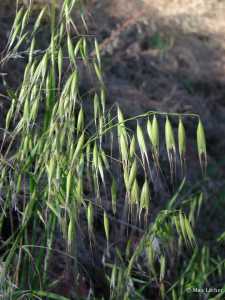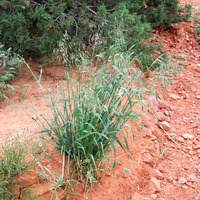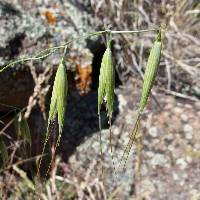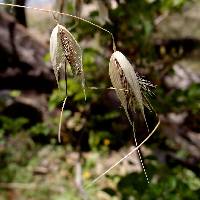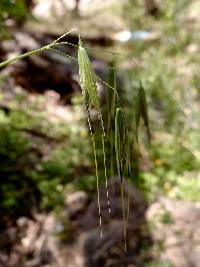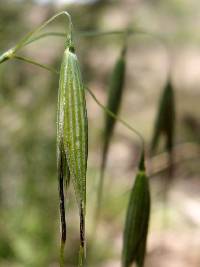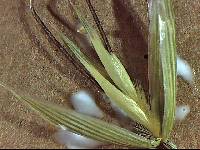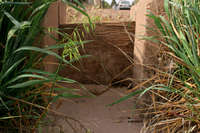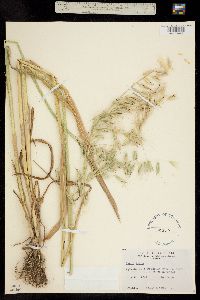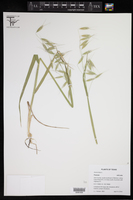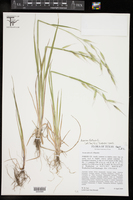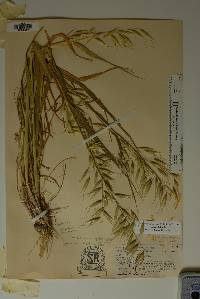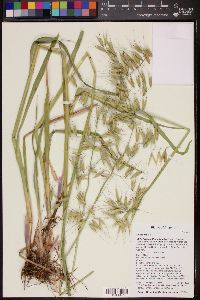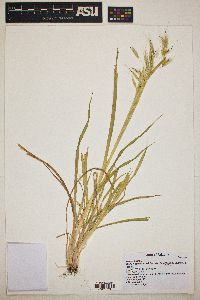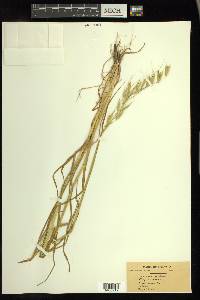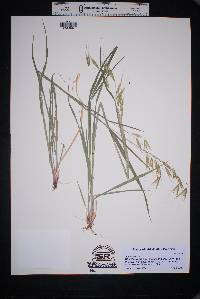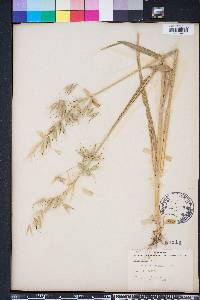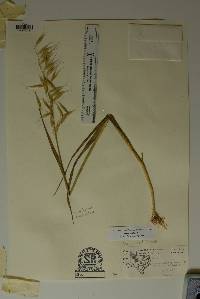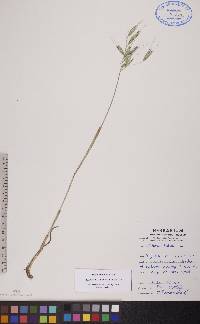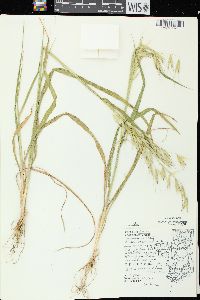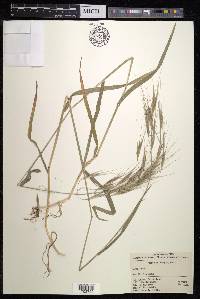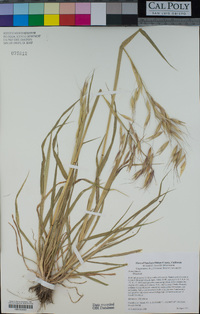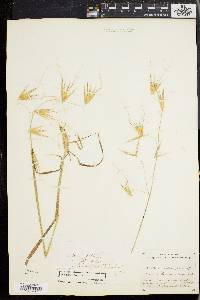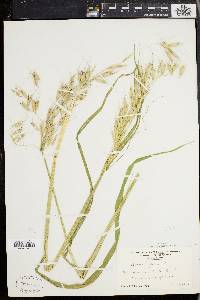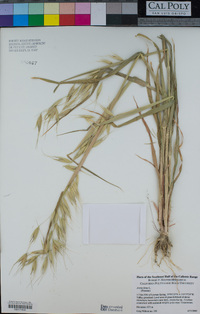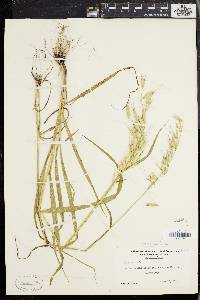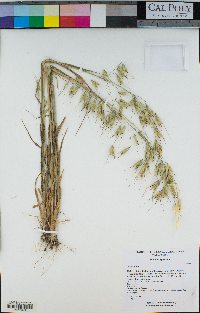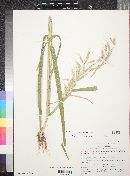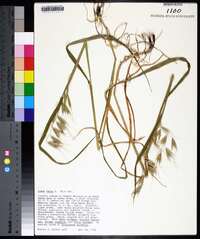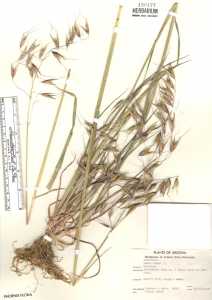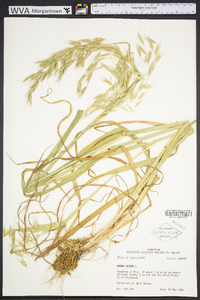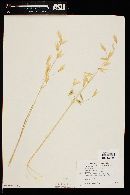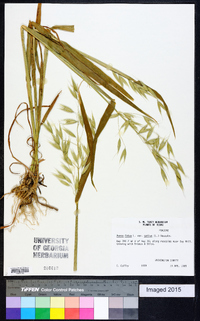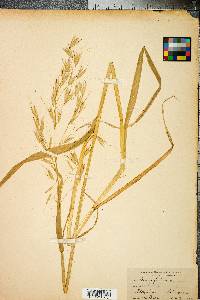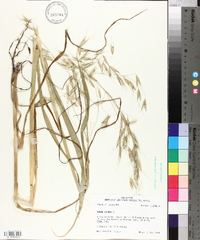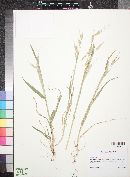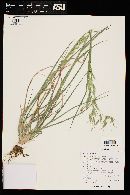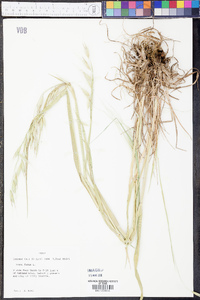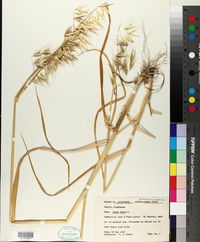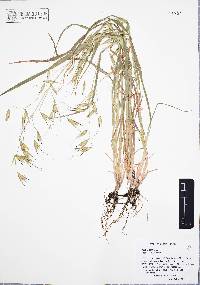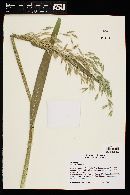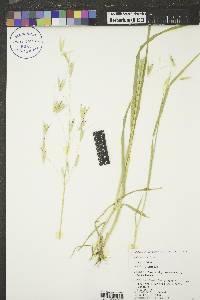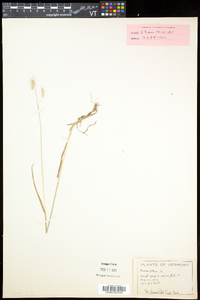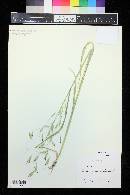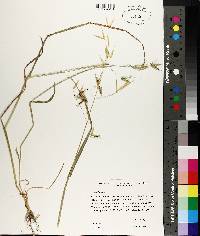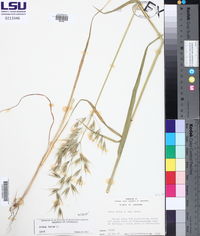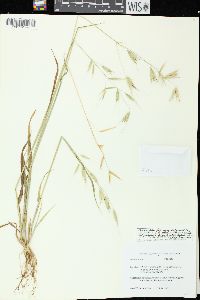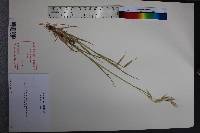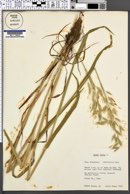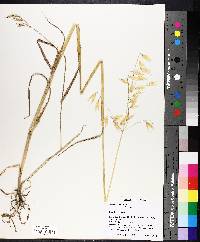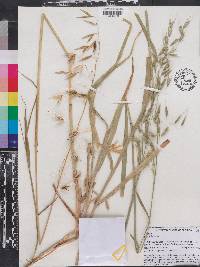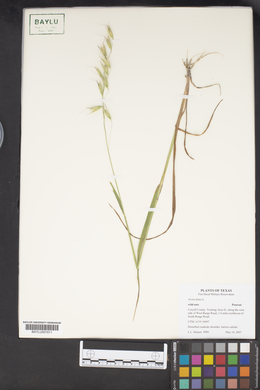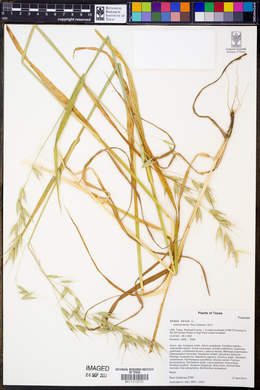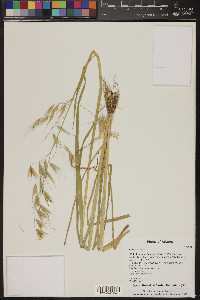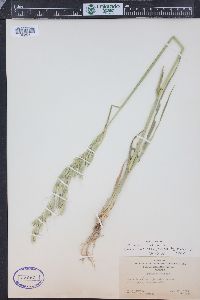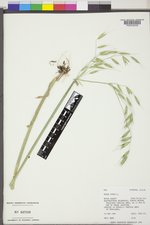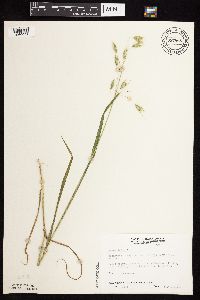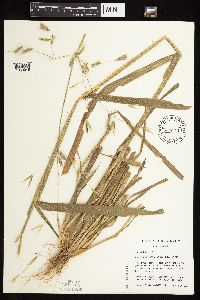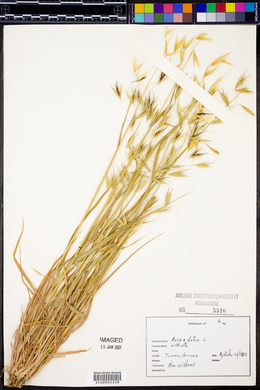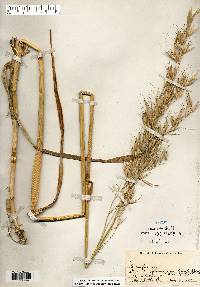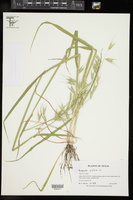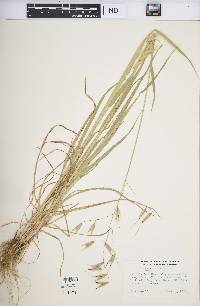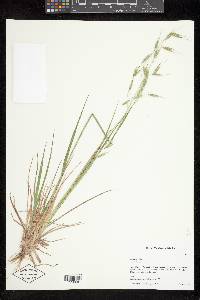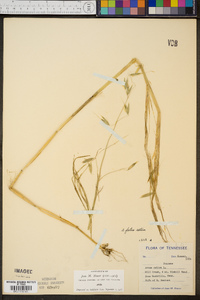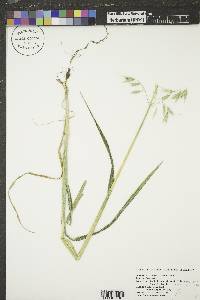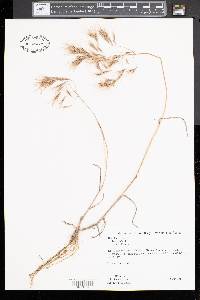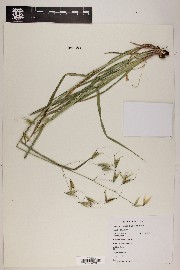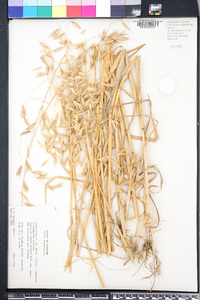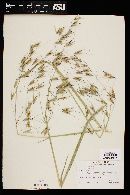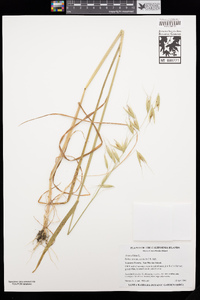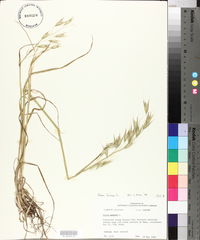
|
|
|
|
Family: Poaceae
Wild Oat, more...flaxgrass, oatgrass, wheat oats, wild oats, Folle Avoine (es: avena cimarrona, avena silvestre, avena loca)
[Avena fatua subsp. meridionalis Malzev, moreAvena fatua var. fatua , Avena fatua var. glabrata Peterm., Avena fatua var. glabrescens , Avena fatua var. intermedia Hartman, Avena fatua var. vilis (Wallr.) Hausskn., Avena intermedia Lindgr., Avena lanuginosa Gilib., Avena meridionalis (Malzev) Roshev., Avena patens St.-Lag., Avena sativa var. fatua (L.) Fiori, Avena sativa var. sericea Hook. f., Avena septentrionalis Malzev, Avena vilis Wallr.] |
Plants annual. Culms 8-160 cm, prostrate to erect when young, becoming erect at maturity. Sheaths of the basal leaves with scattered hairs, distal sheaths glabrous; ligules 4-6 mm, acute; blades 10-45 cm long, 3-15 mm wide, scabridulous. Panicles 7-40 cm long, 5-20 cm wide, nodding. Spikelets 18-32 mm, with 2(3) florets; disarticulation beneath each floret; disarticulation scars round to ovate or triangular. Glumes subequal, 18-32 mm, 9-11-veined; calluses bearded, hairs to 1/4 the length of the lemmas; lemmas 14-22 mm, usually densely strigose below midlength, varying to sparsely strigose or glabrous, veins not extending beyond the apices, apices usually bifid, teeth 0.3-1.5 mm, awns 23-42 mm, arising in the middle 1/3 of the lemmas; lodicules without lobes on the wings; anthers about 3 mm. 2n = 42. Avena fatua is native to Europe and central Asia. It is known as a weed in most temperate regions of the world; in some parts of Canada and the United States it is considered a noxious weed. Avena fatua is sometimes confused with A. occidentalis, but differs in having shorter, wider spikelets, fewer florets, and a distal floret which does not have a heart-shaped disarticulation scar. Hybrids between A. fatua and A. sativa are common in plantings of cultivated oats. The hybrids resemble A. sativa, but differ in having the fatua-type lodicule; some also have a weak awn on the first lemma. They are easily confused with fatuoid forms of A. sativa. Dr. David Bogler, USDA NRCS PLANTS Database Annuals, Terrestrial, not aquatic, Stems nodes swollen or brittle, Stems erect or ascending, Stems geniculate, decumbent, or lax, sometimes rooting at nodes, Stems caespitose, tufted, or clustered, Stems terete, round in cross section, or polygonal, Stem internodes hollow, Stems with inflorescence less than 1 m tall, Stems with inflorescence 1-2 m tall, Stems, culms, or scapes exceeding basal leaves, Leaves mostly cauline, Leaves conspicuously 2-ranked, distichous, Leaves sheathing at base, Leaf sheath mostly open, or loose, Leaf sheath smooth, glabrous, Leaf sheath and blade differentiated, Leaf blades linear, Leaf blades 2-10 mm wide, Leaf blades 1-2 cm wide, Leaf blades mostly flat, Leaf blades mostly glabrous, Leaf blades scabrous, roughened, or wrinkled, Ligul e present, Ligule an unfringed eciliate membrane, Inflorescence terminal, Inflorescence an open panicle, openly paniculate, branches spreading, Inflorescence solitary, with 1 spike, fascicle, glomerule, head, or cluster per stem or culm, Inflorescence lax, widely spreading, branches drooping, pendulous, Inflorescence branches more than 10 to numerous, Flowers bisexual, Spikelets pedicellate, Spikelets laterally compressed, Spikelet 3-10 mm wide, Spikelet less than 3 mm wide, Spikelets with 3-7 florets, Spikelets solitary at rachis nodes, Spikelets all alike and fertille, Spikelets bisexual, Spikelets disarticulating above the glumes, glumes persistent, Rachilla or pedicel hairy, Glumes present, empty bracts, Glumes 2 clearly present, Glumes equal or subequal, Glumes equal to or longer than adjacent lemma, Glume equal to or longer than spikelet, Lemma similar in texture to glumes, Lemma coriaceous, firmer or thicker in texture than the glumes, Lemma 5-7 nerved, Lemma 8-15 ner ved, Lemma body or surface hairy, Lemma apex dentate, 2-fid, Lemma distinctly awned, more than 2-3 mm, Lemma with 1 awn, Lemma awn 2-4 cm long or longer, Lemma awn subapical or dorsal, Lemma awn twisted, spirally coiled at base, like a corkscrew, Lemma awn once geniculate, bent once, Lemma margins thin, lying flat, Lemma margins inrolled, tightly covering palea and caryopsis, Lemma straight, Callus or base of lemma evidently hairy, Callus hairs shorter than lemma, Lemma surface pilose, setose or bristly, Palea present, well developed, Palea membranous, hyaline, Palea shorter than lemma, Palea 2 nerved or 2 keeled, Stamens 3, Styles 2-fid, deeply 2-branched, Stigmas 2, Fruit - caryopsis, Caryopsis ellipsoid, longitudinally gr FNA 2007, Gould 1980 Common Name: wild oat Duration: Annual Nativity: Non-Native Lifeform: Graminoid General: Large, erect tufted annual grass with smooth, thick but weak stems 30-120 cm tall. Vegetative: Sheath open, with collar margins sparsely villous; ligule membranous, 4-6 mm long, toothed with an obtuse to acute tip; blades thin and flat with sparsely villous margins, 5-12 mm wide, 10-30 cm long. Inflorescence: Panicle large with spreading and curving branches and pedicels; spikelets 2 or 3 flowered; glumes glabrous, 2-3 cm long; lemmas pubescent and rounded on back, firm, 2 cm long with a stout, twisted and geniculate awn that is 2-4 cm long; disarticulation beneath each floret. Ecology: Found in roadsides, fields, and waste place, below 7,500 ft (2286 m); flowers March-July. Distribution: Native to Europe and c Asia; naturalized in temperate regions throughout the world; found throughout n Amer. Notes: Tall annual grass with a large panicle of drooping spikelets, each spikelet has 2 or 3 long, bent awns. Total length of each spikelet is much larger than most grasses, at 2 cm without awns and ca. 5 cm including the awns. Distinguished from A. sativa by virtue of its much narrower blades and weaker stems. Ethnobotany: The seeds were parched, ground into flour, boiled, pounded, eaten dry, as mush, pinole, and stored for later use. Etymology: Avena is Latin for oats, while fatua means foolish, insipid, or worthless. Synonyms: Avena fatua var. glabrata, A. fatua var. vilis Editor: SBuckley 2010, AHazelton 2015 Stout annual to 10+ dm; ligules 2-6 mm; blades scabrous to somewhat pilose, 3-10(-15) mm wide; panicle 10-25+ cm, open, its branches horizontally spreading; spikelets ±nodding, (2)3-fld, the hirsute rachilla readily disarticulating; glumes prominently (7)9- or 11-veined, the first one 19-26+ mm, lanceolate, acuminate; lemmas 14-20+ mm, 5-or 7-veined, usually with brown hairs on the back, the 2 lower ones awned; awns (18-)28-45(-52) mm, stout, geniculate, twisted below, thin and tapering above, attached above the middle of the lemma; third lemma usually awnless; 2n=42. Native of Europe, frequently adventive or established as a weed of cult. ground or waste places, but not common in most of our range except at the nw. Gleason, Henry A. & Cronquist, Arthur J. 1991. Manual of vascular plants of northeastern United States and adjacent Canada. lxxv + 910 pp. ©The New York Botanical Garden. All rights reserved. Used by permission. |
|
|
|

